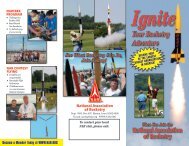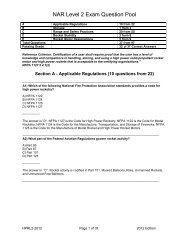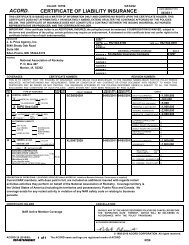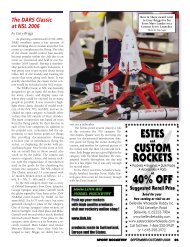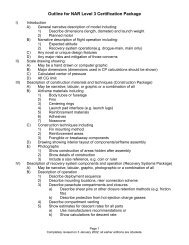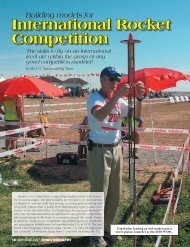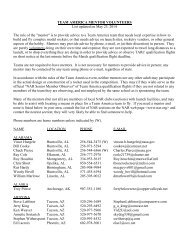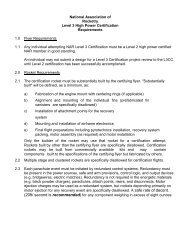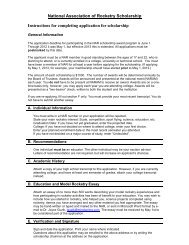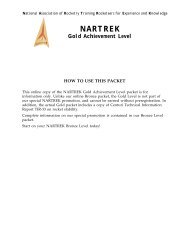Modular rockeTs Building Baffles - National Association of Rocketry
Modular rockeTs Building Baffles - National Association of Rocketry
Modular rockeTs Building Baffles - National Association of Rocketry
Create successful ePaper yourself
Turn your PDF publications into a flip-book with our unique Google optimized e-Paper software.
a full-sized rocket in RockSim (an engineeringand simulation program) and builta scaled-down prototype vehicle to teststability and performance before buildingtheir final rocket.Tyler Chumbley, mentor Ernie Puckett, Kenneth Conner, and Jacob Pfundload up a scaled-down version <strong>of</strong> the SLI project rocket at the highpower Hudson Ranch/SCORE (Southern Colorado Rocketeers) sitenear Pueblo, Colorado. This flight was to prove the stability <strong>of</strong> the design,and it carried one altimeter and a transmitting video camera.Photo by Lloyd Chumbley.If You Build It…SLI teaches middle and high schoolstudents to design, build, and test reusablerockets with scientific payloads. Thisunique hands-on experience allows studentsto demonstrate pro<strong>of</strong>-<strong>of</strong>-concept fortheir designs and gives previously abstractconcepts tangibility. It’s like putting wheelson a car and really energetic gas in the tankand setting teens free.The CMCA experiment was an instrumentationtest: the altimeters used inTARC and SLI give variable readings fromone unit to the next, and the students werecurious about the accuracy <strong>of</strong> the altime-ters. An HD video recorder and a GPS unitwere onboard with the two altimeters. Acomparison between the different instrumentsallowed the team to determine theaccuracy <strong>of</strong> the altimeters. The team putthe science and math they’d been learningin class to practical use building and flyingthe rocket and analyzing the data fromtheir experiment. They designed and flewA SuccessfulFlightAn extremely promising aspect <strong>of</strong> thefinal flight was that the rocket did not progressany further than ten feet away from thepad horizontally in any direction. As a result,the data was easier to interpret. Nate,the team’s data analyst, explained, “We expectedto have to do precise static tests todetermine the effects <strong>of</strong> perspective, andwe also expected to have to apply the PythagoreanTheorem to triangulate the actualaltitude, but that won’t be necessary. Itcertainly makes my job a lot more fun.”CMCA’s final flight on 4-14-09 wassuccessful. The rocket flew straight up asplanned, and excellent footage was taken.The rocket did a tailslide. In a tailslide, therocket does not arc over; it actually comesto a complete stop while still pointing up,and then starts back down tail first. Whilethe team hoped for such a result, they didnot expect it, because the odds against a tailslide are 300 to 1, even with careful preparationto precisely fly the rocket straightup. One thing that went wrong was thatthe rocket spun 4.5 times, which was unexpectedas that had never happened before.A bigger problem was that the engine wasmissing an O-ring. Thankfully, Ernie Puckett(one <strong>of</strong> the mentors) rebuilt it correctly,which saved the team from a cato. Whenthe engine lit, though, it became immediatelyobvious that the grain was a GreenThis beautiful, nine foot tall,14 pound rocket is ready for itsfinal flight to nearly a mile highon a Green Gorilla K motor. Theamazing paint job was donated byB&W Auto Body & Paint.Left-to-right: Tyler Chumbley,mentor Jeff Lane, Nate Lane,Trenton Tulloss, David Flack,Jacob Pfund, mentor LloydChumbley, Adelaide Reddish,mentor Ernie Puckett, Sara Volz,and Kenneth Conner.Photo by Ann Conner.12 MAY/JUNE 2010 Sport <strong>Rocketry</strong>




